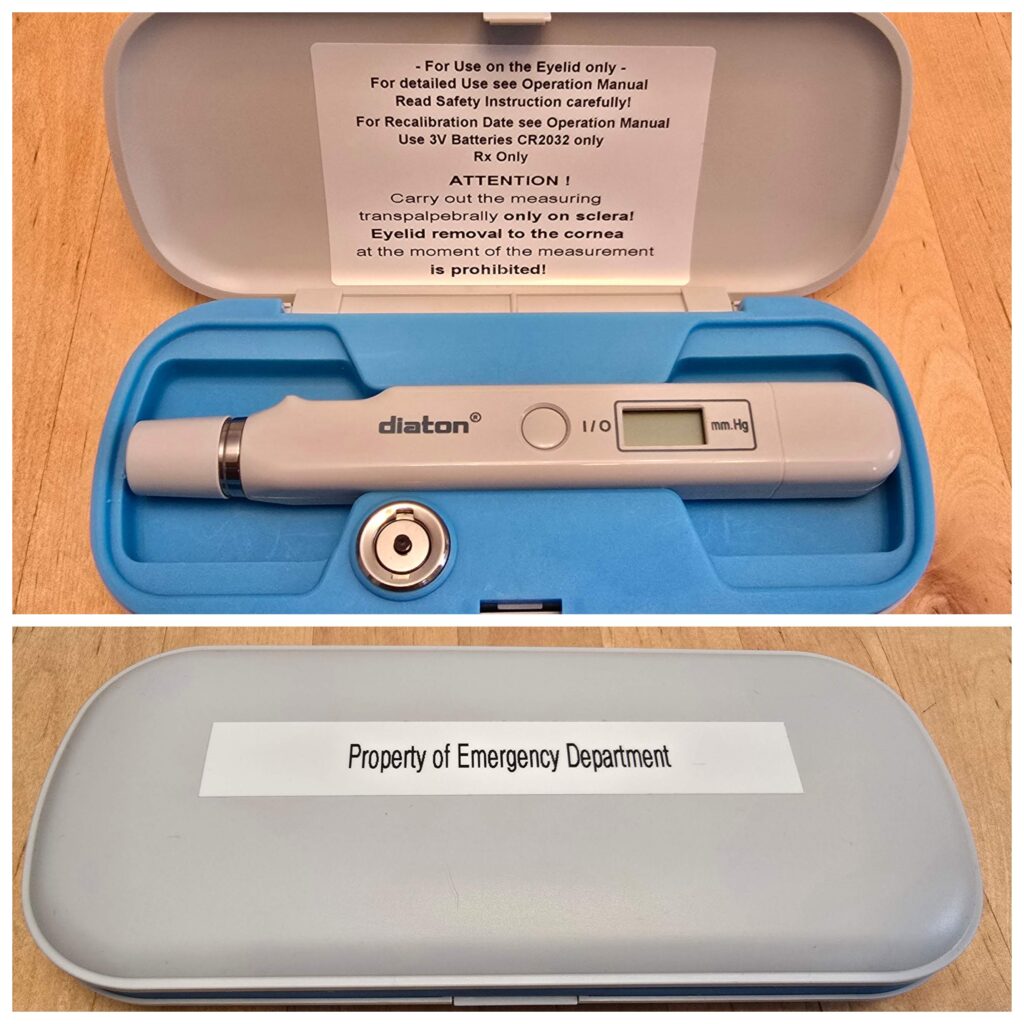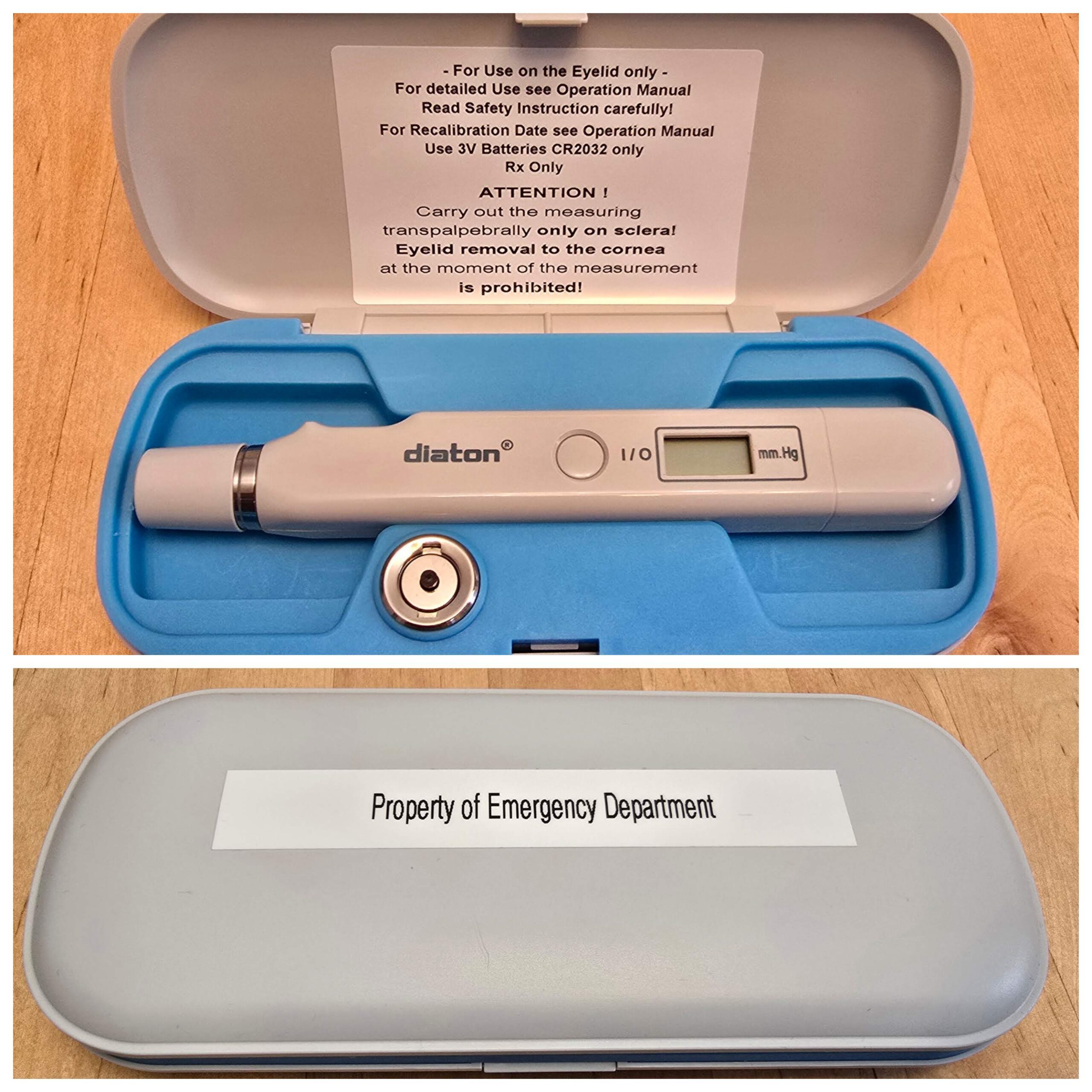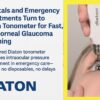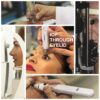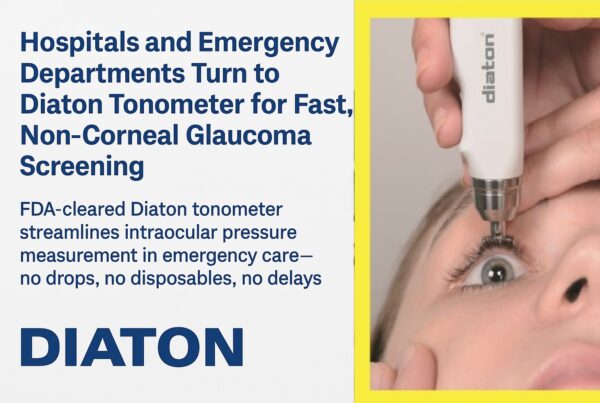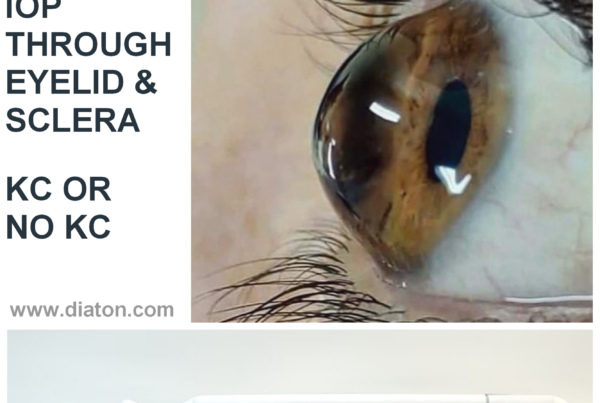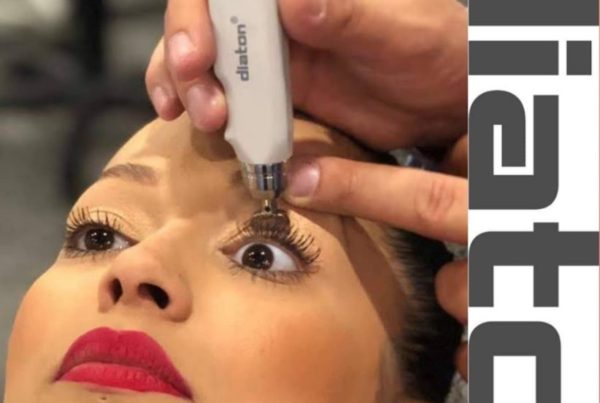Benefits of Using the Diaton Tonometer in Hospital Emergency Rooms (ER / ED) and Urgent Care Facilities
Introduction: The Diaton tonometer is a cutting-edge, non-contact, transpalpebral device that allows for intraocular pressure (IOP) measurement through the Eyelid without touching the cornea. This unique method offers several advantages, particularly in emergency rooms or departments and urgent care settings, where rapid, accurate diagnosis and treatment are crucial. In this document, we will explore how the Diaton tonometer enhances patient care in these environments, presenting specific cases where it could prove invaluable.
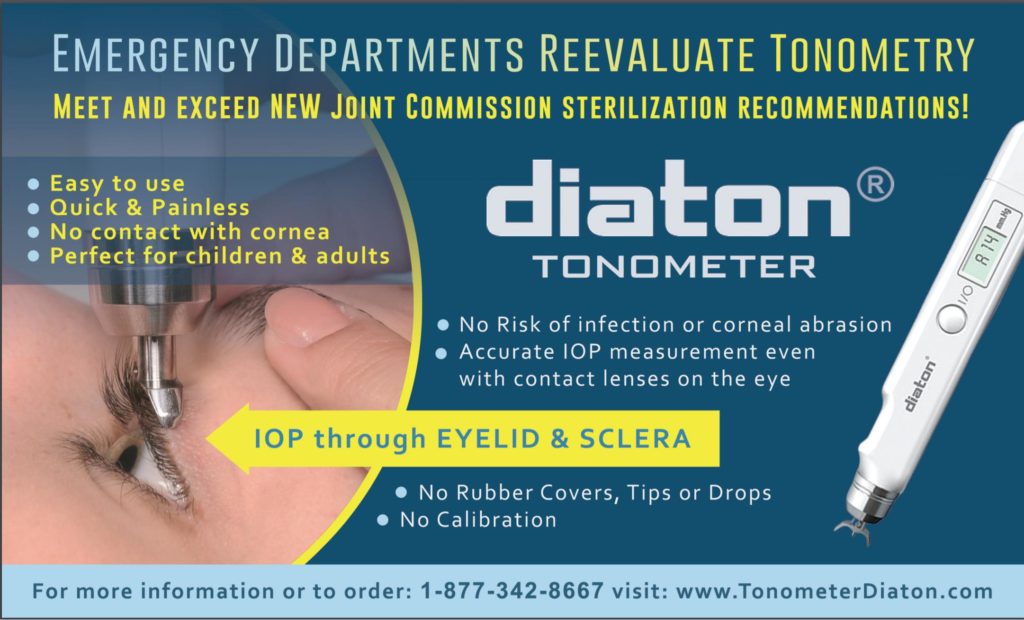
When it comes to selecting the right equipment for your hospital, emergency department ED ER, or urgent care facility, precision, efficiency, and patient comfort are paramount. The Diaton tonometer delivers all of these with its revolutionary non-contact, transpalpebral intraocular pressure (IOP) measurement. This unique device allows for IOP readings through the eyelid, avoiding corneal contact and providing significant advantages over traditional tonometry methods.
Here’s why the Diaton tonometer is the best choice for your healthcare facility:
1. Non-Invasive and Comfortable for Patients
Traditional tonometers require contact with the cornea, which can be uncomfortable for patients and increase the risk of infection or corneal damage. The Diaton tonometer measures IOP through the upper eyelid, providing a non-invasive, painless alternative that improves patient experience.
- Ideal for Sensitive Cases: Patients with corneal injuries, post-surgical eyes, or those who are more anxious (such as pediatric or geriatric patients) benefit from this gentle approach. The lack of direct contact with the eye minimizes discomfort, allowing clinicians to measure IOP without causing stress or additional complications.
2. Efficiency in High-Traffic Settings
In fast-paced environments like emergency rooms and urgent care centers, speed is crucial. The Diaton tonometer allows for quick IOP measurement without the need for anesthetic drops, sterile covers, or extensive patient preparation.
- Save Time and Resources: Its streamlined process reduces the time spent on patient assessments, meaning more efficient workflows for your staff. Whether you’re working with patients who may be difficult to assess (such as children, elderly, or those in distress) or in high-volume settings, the Diaton allows you to focus on urgent cases without delays.
3. Portable and Easy to Use
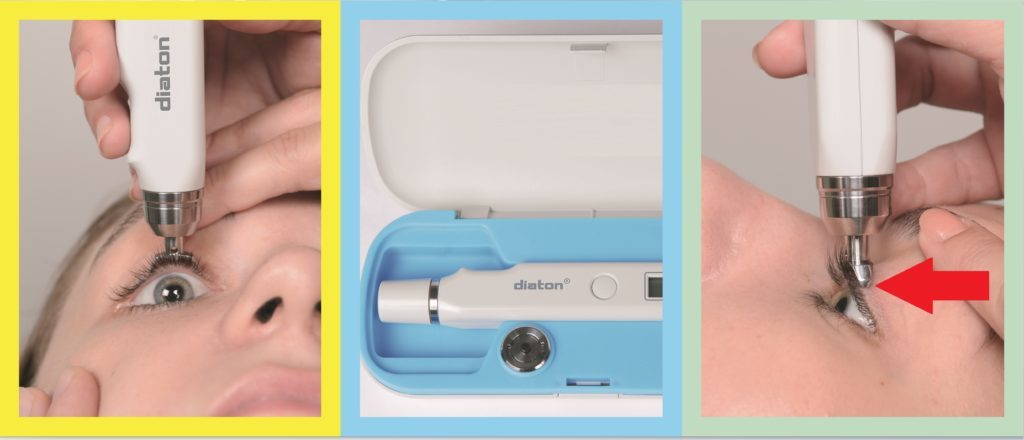
The compact design of the Diaton tonometer means it can be easily transported and used in any setting—whether in a hospital’s emergency department or in a smaller urgent care clinic. Its simplicity means your staff can use it with minimal training, making it a valuable tool across a range of departments.
- Versatile Across Departments: No specialized equipment or environment is required, meaning the Diaton tonometer can be used right at the patient’s bedside, in waiting rooms, or in examination rooms, allowing for seamless integration into your facility’s workflow.
4. Cost-Effective Solution for Eye Care
The Diaton tonometer’s non-contact nature eliminates the need for costly disposables like probes or tips. This makes it an economical choice for facilities with limited budgets, where minimizing ongoing operational costs is essential.
- Reduce Equipment Maintenance and Supply Costs: Because the Diaton tonometer doesn’t touch the cornea (only upper eyelid), it requires no sterilization between uses, unlike traditional devices. The Diaton only needs an alcohol swab to be used to wipe off the tip of the tonometer. This also means lower supply costs (no specific replacement sleeved tips of covers needed) and less downtime between patient exams, maximizing the value of your investment.
5. Improves Infection Control and Patient Safety
In healthcare settings, reducing the risk of cross-contamination is a top priority. Since the Diaton tonometer avoids direct contact with the eye, the chances of transmitting infections such as conjunctivitis or even airborne illnesses like COVID-19 are minimized.
- Safe for High-Volume Patient Turnover: In emergency departments or rooms or urgent care facilities where multiple patients are assessed rapidly, the Diaton tonometer helps maintain infection control standards, providing peace of mind to both staff and patients.
6. Accurate and Reliable for Early Glaucoma Detection
Accurate IOP measurement is crucial for diagnosing and managing glaucoma, and the Diaton tonometer delivers reliable results comparable to traditional tonometers. In emergency settings where a rapid diagnosis is required, this tool allows clinicians to assess and treat conditions like acute glaucoma swiftly.
- Case Study Example: A patient presents to the ER with symptoms such as severe eye pain, headache, and blurred vision. The Diaton tonometer allows the emergency physician to quickly and accurately measure the IOP, leading to a diagnosis of acute angle-closure glaucoma. Immediate treatment is initiated, potentially saving the patient’s vision.
Conclusion: Diaton Tonometer – The Best Choice for Your Facility
For hospitals, emergency departments (ED)/ emergency rooms (ER), and urgent care centers looking to improve efficiency, enhance patient safety, and reduce costs, the Diaton tonometer offers a superior solution for IOP measurement. Its non-invasive, portable, and easy-to-use design ensures that you can provide high-quality care while streamlining workflows and maintaining strict infection control standards.
If you’re seeking a tonometer that delivers accurate results without compromising on patient comfort or staff efficiency, the Diaton tonometer is the best choice for your facility.
To Obtain More information about Diaton tonometer visit www.TonometerDiaton.com or Dial: 1-877-342-8667
Here’s a list of 10 sample cases where the Diaton Tonometer is effectively used in Emergency Departments (ED), Emergency Rooms (ER), or Urgent Care Clinics:
- Case 1: Acute Angle-Closure Glaucoma Suspected
A 65-year-old male presents with sudden onset severe headache, nausea, and blurred vision. The ER physician uses the Diaton tonometer to quickly measure intraocular pressure (IOP), confirming elevated IOP. The diagnosis of acute angle-closure glaucoma is made, and immediate treatment is initiated to prevent vision loss. - Case 2: Pediatric Eye Trauma
A 10-year-old child arrives at the urgent care clinic with a swollen, painful eye after a fall. The child is uncooperative and anxious, making traditional tonometry difficult. The Diaton tonometer is used to measure IOP through the eyelid, ruling out elevated pressure and allowing for a less invasive assessment. - Case 3: Corneal Abrasion and Suspected Glaucoma
A 48-year-old female visits the emergency department with a corneal abrasion from contact lens use, reporting eye pain and blurred vision. The Diaton tonometer is employed, as traditional tonometry is contraindicated due to the corneal injury. Her IOP is measured accurately, guiding further treatment. - Case 4: Post-Operative Eye Surgery Patient
A patient who recently underwent cataract surgery presents to urgent care with concerns about increasing eye pressure. To avoid touching the eye post-surgery, the Diaton tonometer is used to assess IOP non-invasively, ensuring no complications from the surgery are contributing to elevated pressure. - Case 5: Geriatric Patient with Suspected Glaucoma
A 75-year-old woman complains of worsening vision and discomfort in her eyes at the urgent care center. The Diaton tonometer is used to measure her IOP without causing the stress that could be triggered by corneal contact, confirming a diagnosis of glaucoma and prompting referral to an ophthalmologist. - Case 6: Eye Redness and Blurred Vision in Diabetic Patient
A 60-year-old diabetic male arrives at the ER with redness, pain, and blurred vision in one eye. The Diaton tonometer is used to check his IOP as part of an assessment for potential diabetic eye complications. His pressure is elevated, leading to further urgent evaluation for glaucoma. - Case 7: COVID-19 Positive Patient with Eye Pain
A patient who is positive for COVID-19 presents with significant eye discomfort. To minimize the risk of virus transmission through traditional tonometry, the Diaton tonometer is used, avoiding direct contact with the eye while providing essential IOP measurement. - Case 8: Sudden Vision Loss in Urgent Care
A 55-year-old man presents to urgent care with a sudden loss of vision in one eye. The Diaton tonometer is quickly used to rule out elevated IOP as a cause, allowing the clinician to focus on other potential causes of the vision loss, like retinal detachment. - Case 9: Emergency Glaucoma Monitoring
A patient with a known history of glaucoma arrives at the emergency room experiencing severe eye pain. The Diaton tonometer is used to monitor IOP without corneal contact, ensuring the patient’s pressure is under control and ruling out acute glaucoma exacerbation. - Case 10: Suspected Ocular Hypertension in Trauma Case
A 35-year-old male arrives at the ED after an injury from a car accident, complaining of eye pain and vision issues. The Diaton tonometer is used to check IOP since the patient’s eye is swollen, confirming the absence of ocular hypertension, allowing the trauma team to focus on other injuries.
These cases showcase how the Diaton tonometer can be effectively used in various urgent and emergency situations, providing non-invasive, accurate, and timely IOP measurements that support rapid decision-making.
